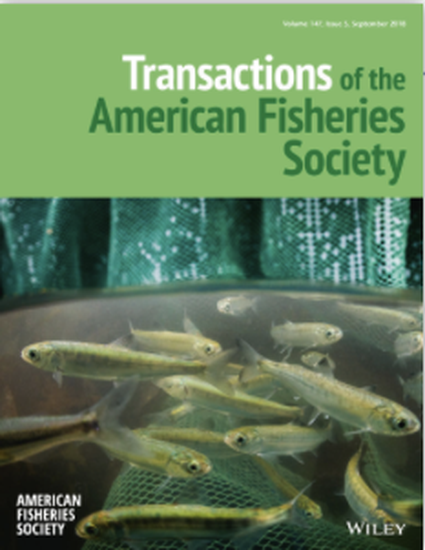
Article
Trophic Ecology of Lahontan Cutthroat Trout: Historical Predator–Prey Interaction Supports Native Apex Predator in a Unique Desert Lake
Transactions of the AMerican Fisheries Society
(2018)
Abstract
Pyramid Lake, Nevada, remains one of the last strongholds for lacustrine‐strain Lahontan Cutthroat Trout Oncorhynchus clarkii henshawi (LCT) following historical declines throughout their native range. Historically the apex predator in this aquatic ecosystem, LCT in Pyramid Lake are now entirely dependent on hatchery programs and are potentially threatened by the introduction of a nonnative piscivore. The purpose of this study was to identify strong food web interactions and potential trophic limitations to the LCT population. Our specific objectives were to estimate seasonal foraging patterns, trophic position (TP), trophic niche space, diet composition, and seasonal depth distributions of LCT relative to prey fish. Additionally, we evaluated the potential for competition between LCT and nonnative, piscivorous Sacramento Perch Archoplites interruptus by examining diet overlap and trophic niche space. Our results indicate that LCT are apex predators, with TP (large [>400 mm TL] LCT: TP [mean ± 1.96·SE] = 4.30 ± 0.04) and diet composition indicating high rates of piscivory (average annual rate of piscivory = 77.1% for large LCT) throughout the year. Small (200–400 mm TL) LCT exhibited weak dietary overlap (Schoener's index = 0.55) and large LCT exhibited strong overlap (Schoener's index = 0.72) with Sacramento Perch.
Disciplines
Publication Date
2018
DOI
https://doi.org/10.1002/tafs.10066
Citation Information
Phaedra Budy. "Trophic Ecology of Lahontan Cutthroat Trout: Historical Predator–Prey Interaction Supports Native Apex Predator in a Unique Desert Lake" Transactions of the AMerican Fisheries Society Vol. 147 Iss. 5 (2018) p. 842 - 854 Available at: http://works.bepress.com/phaedra_budy/206/
